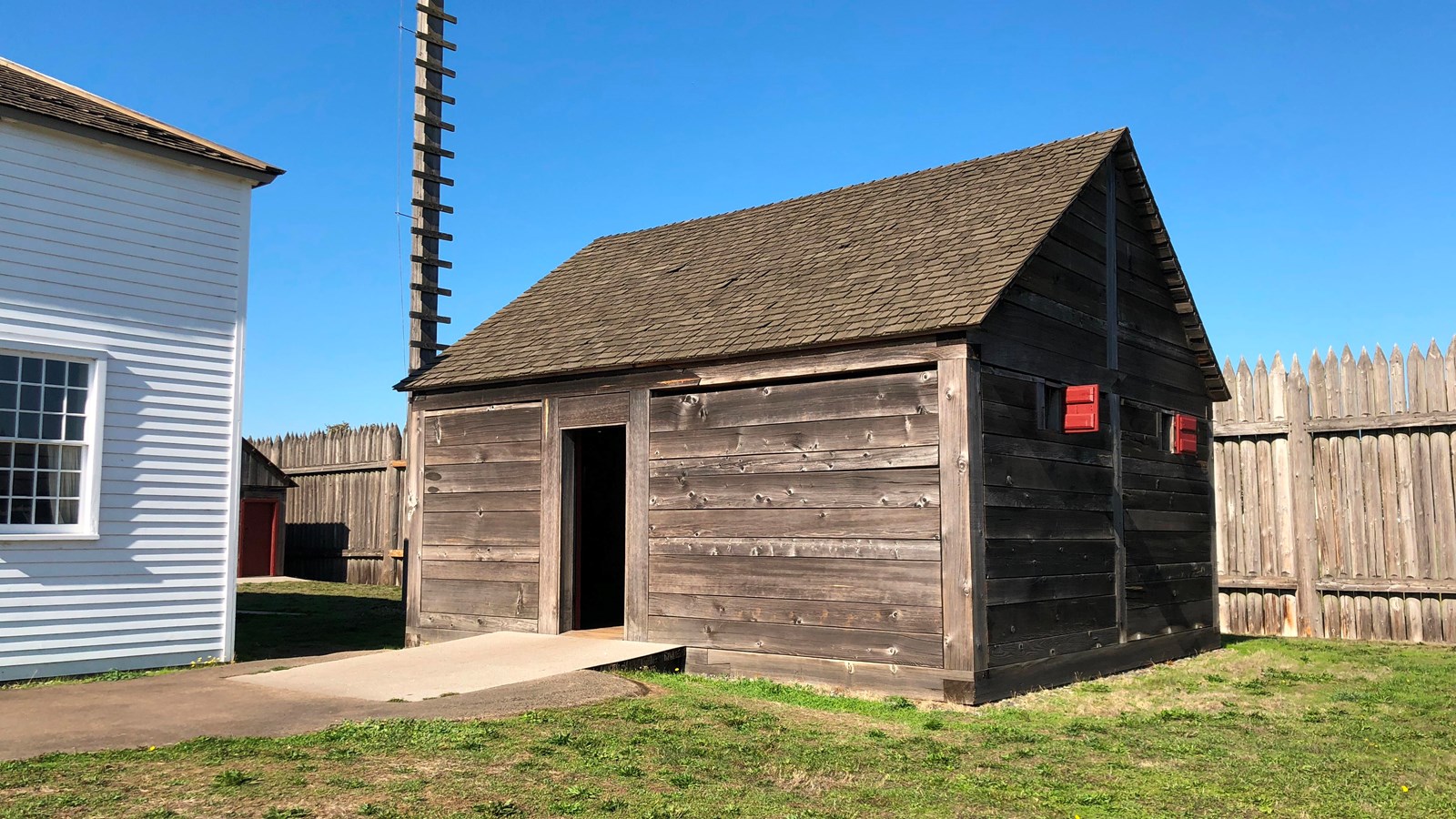Last updated: September 8, 2020
Place
The Jail

NPS Photo
Quick Facts
Amenities
1 listed
Historical/Interpretive Information/Exhibits
The Pacific Northwest may have been a remote place during the mid-19th century, but it was certainly not lawless. At Fort Vancouver, Chief Factor Dr. John McLoughlin detained rule-breakers and accused criminals in a small jail inside the fort's palisade walls. The building measured about twenty feet by twenty feet and was built out of rough timbers. It contained only one room with minimal furnishings and sat behind the Counting House. Conditions inside the jail were harsh by today's standards but relatively luxurious for the time. The Hudson's Bay Company (HBC) required that prisoners be fed and given water - an uncommon practice, especially on the frontier. McLoughlin supplied detainees with a few hard wooden bunkbeds and benches, some water and slop buckets, and possibly a wash basin. The Jail was built without a fireplace, probably to reduce the risk that prisoners would burn down the building.
Most of the people held at Fort Vancouver's jail committed offenses such as theft or assault. For example, one employee was imprisoned a night in February 1848 for "drunkenness and rioting." Alcohol played a role in many of these types of incidents. On a spring evening in 1846, a group of American moonshiners brought homemade whiskey to the fort to sell to Company employees. When a group of employees drank too much and couldn't work the next day, they were thrown in jail. Insubordination (refusing to do one's job) was a common offense as well. Deserters from trapping voyages were sent to Fort Vancouver, where they awaited punishment. Prisoners typically stayed at the jail only for short periods of time. Usually, they would then receive a fine, but more serious offenders were flogged or deported back to Canada or England.
The jail was not a permanent part of Fort Vancouver until sometime in the early 1840s. Prior to the building's construction, rule-breakers were simply placed in iron shackles for a period of time. It is unclear why McLoughlin chose to build the jail when he did. However, it likely resulted from his son's murder at Fort Stikine in 1842, and his desire to prosecute those responsible. Of course crime occurred at Fort Vancouver from the very beginning, but recorded instances increased markedly in the 1840s. With an influx of American settlers and heightened competition for resources, the Jail saw more detentions for claim-jumping and theft. It was one of the few buildings that continued to be used into the 1850s and 60s. However, new development in the area made Fort Vancouver's Jail obsolete by 1866. It was then dismantled or burned down.
Most of the people held at Fort Vancouver's jail committed offenses such as theft or assault. For example, one employee was imprisoned a night in February 1848 for "drunkenness and rioting." Alcohol played a role in many of these types of incidents. On a spring evening in 1846, a group of American moonshiners brought homemade whiskey to the fort to sell to Company employees. When a group of employees drank too much and couldn't work the next day, they were thrown in jail. Insubordination (refusing to do one's job) was a common offense as well. Deserters from trapping voyages were sent to Fort Vancouver, where they awaited punishment. Prisoners typically stayed at the jail only for short periods of time. Usually, they would then receive a fine, but more serious offenders were flogged or deported back to Canada or England.
The jail was not a permanent part of Fort Vancouver until sometime in the early 1840s. Prior to the building's construction, rule-breakers were simply placed in iron shackles for a period of time. It is unclear why McLoughlin chose to build the jail when he did. However, it likely resulted from his son's murder at Fort Stikine in 1842, and his desire to prosecute those responsible. Of course crime occurred at Fort Vancouver from the very beginning, but recorded instances increased markedly in the 1840s. With an influx of American settlers and heightened competition for resources, the Jail saw more detentions for claim-jumping and theft. It was one of the few buildings that continued to be used into the 1850s and 60s. However, new development in the area made Fort Vancouver's Jail obsolete by 1866. It was then dismantled or burned down.
